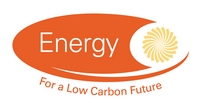Consumers, Vehicles and Energy Integration Project - D1.3. Market Design and System Integration (full report)
Abstract:
The objective of the Consumers, Vehicles and Energy Integration project is to inform UK Government and European policy and to help shape energy and automotive industry products, propositions and investment strategies. Additionally, it aims to develop an integrated set of analytical tools that models future market scenarios in order to test the impact of future policy, industry and societal choices. The project is made up of two stages:
- Stage 1 aims to characterize market and policy frameworks, business propositions, and the integrated vehicle and energy infrastructure system and technologies best suited to enabling a cost-effective UK energy system for low-carbon vehicles, using the amalgamated analytical toolset.
- Stage 2 aims to fill knowledge gaps and validate assumptions from Stage 1 through scientifically robust research, including real world trials with privatevehicle consumers and case studies with business fleets. A mainstream consumer uptake trial will be carried out to measure attitudes to PiVs after direct experience of them, and consumer charging trials will measure mainstream consumer PiV charging behaviours and responses to managed harging options
- Customer Proposition.
- Physical Supply Chain.
- Commercial Value Chain.
- Market and Policy Framework.
Publication Year:
2017
Publisher:
ETI
Author(s):
Greenleaf, J. and Rix, O.
Energy Category
Language:
English
File Type:
application/pdf
File Size:
6812240 B
Rights:
Energy Technologies Institute Open Licence for Materials
Rights Overview:
The Energy Technologies Institute is making this document available to use under the Energy Technologies Institute Open Licence for Materials. Please refer to the Energy Technologies Institute website for the terms and conditions of this licence. The Information is licensed "as is" and the Energy Technologies Institute excludes all representations, warranties, obligations and liabilities in relation to the Information to the maximum extent permitted by law. The Energy Technologies Institute is not liable for any errors or omissions in the Information and shall not be liable for any loss, injury or damage of any kind caused by its use. This exclusion of liability includes, but is not limited to, any direct, indirect, special, incidental, consequential, punitive, or exemplary damages in each case such as loss of revenue, data, anticipated profits, and lost business. The Energy Technologies Institute does not guarantee the continued supply of the Information. Notwithstanding any statement to the contrary contained on the face of this document, the Energy Technologies Institute confirms that it has the right to publish this document.
Further information:
N/A
Region:
United Kingdom
Related Dataset(s):
Related Project(s):
Related Publications(s):
An ETI Perspective - The route to a low cost, low carbon light vehicle transition
An affordable and effective route to decarbonising transport - Presentation
Consumers, Vehicles and Energy Integration (CVEI) - D3.2. Battery State of Health Model Report
Consumers, Vehicles and Energy Integration (CVEI) Project Summary - Presentation 2016
Consumers, Vehicles and Energy Integration (CVEI) project - Overview Presentation 2017
Consumers, Vehicles and Energy Integration (CVEI) project Summary - Presentation 2017
Consumers, Vehicles and Energy Integration (CVEI): Fleet Study Report
Consumers, Vehicles and Energy Integration Project - D2.1. Consumer attitudes and behaviours report
Infographic - 10 years of innovation - Light Duty Vehicles
Real world intelligent charging for the mass market - Presentation



